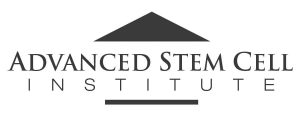06 Jun IS STEM CELL THERAPY RIGHT FOR ME?
Modern medicine steadily advances towards an era where the dream of using the safest, most reliable, and efficient therapy options can be actualized. Stem cell therapy is one of the many ways by which regenerative medicine seeks to take advantage of the body’s self-healing capabilities and reservoirs to improve the management of several chronic diseases.
There are areas yet to be understood in the research for stem cell therapy and the possible benefits or side effects. However, it is being used as an alternative therapy in the management of some conditions and many scientists already call it the future of regenerative medicine. You may be wondering if stem cell therapy is worth your consideration and why.

What are stem cells and what are they used for?
The body has different types of cells that exist in different organs with special abilities that help them to perform specific functions in the body. Here are some interesting facts about stem cells. Stem cells can also be called primitive cells. They are unspecialized cells of various origins that possess a unique ability to differentiate, develop, transform or specialize into specific kinds of cells depending on what the body needs. Stem cells can be found in certain areas of the body and they can divide regularly to restore damaged tissues in the body.
Stem cells are used in medical therapies because of their inherent potential for regeneration. Stem cells are of different types and functions. They include; Embryonic, Amniotic, Cord-blood, and Mesenchymal stem cells.
What are the different types of stem cell therapy?
Stem cell therapy involves repairing damaged cells in the body by reducing inflammation and regulating the activities of the body’s immune system. Advanced stem cell therapy may not provide a definitive cure for the disease condition but gives the body a fighting chance; strengthens the body and encourages it to heal itself.
The two major types of stem cell transplants are; Allogenic transplant which involves obtaining stem cells from a donor and introducing them to a patient and then the Autologous transplant which involves collecting stem cells from the patient’s blood and reintroducing them into the same patient.
What diseases could benefit from stem cell therapy?
Have doctors used stem cells to treat or manage any disease? The answer is yes. Stem cell transplants have been used in the management of different medical conditions like Leukemia, Lymphoma, Multiple myeloma, etc. Stem cells have been found to offer significant improvements in many other conditions and are being studied for potential use in managing various forms of diseases. Some of the conditions that could benefit from stem cell therapy include; Chronic pain, heart diseases, burns, Parkinson’s disease, blood diseases, spinal cord injuries, chronic lung diseases, immune disorders, etc.
Can stem cell therapy be effective in the management of pain?
Many researchers and scientists have described stem cells as the future of regenerative medicine for pain and healing. Why are stem cells such a rave in modern medicine? They represent the next level in the advancement of modern medicine, a treatment option that will trigger little ethical concern, reduce the need for surgical intervention and significantly improve the quality of life for patients.
The conventional pain treatment simply provides temporary relief while stem cell therapy offers a possibility of long-term healing. Advanced Stem cell therapy targets and reduces inflammation, activates the regeneration of damaged tissue, results in the restoration of tissue components, and function, and reduces morbidity. Several clinical trials have employed the use of stem cells to manage pain from osteoarthritis and other conditions and have shown promising results with very minimal side effects.
What is the procedure for stem cell therapy?
Stem cell therapy usually involves a step-by-step process that requires the cooperation of the medical team, patient, and family. The procedure may vary depending on the disease condition, the status of the patient, and other important factors. However, the procedure generally involves; Evaluating and assessing the patient’s health status which requires specific tests, Identifying the type of therapy needed and discussing with the patient, Extracting the stem cells from the donor or patient, and Preparatory treatment to get the body ready for transplant, Introducing the stem cells into the patient, Engraftment, Recovery, and Post-transplant care. You must cooperate with your physician to get the best out of therapy.
What are the possible side effects of stem cell therapy?
Like every other form of therapy in medicine, there may be side effects after going through stem cell therapy. However, very few major adverse effects have been reported from stem cell therapy. Patients must consult their physician to know if they are eligible to undergo such procedures.



No Comments